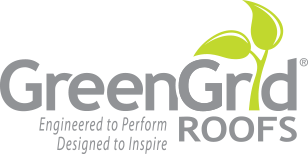In the realm of sustainable urban development, green roofs have garnered recognition not only for their aesthetic appeal but also for their substantial contributions to improving energy efficiency in buildings. These innovative rooftop gardens are strategically designed to address environmental challenges while delivering tangible benefits that directly impact energy consumption and building performance.
Energy Efficiency Benefits
1. Reduced Energy Consumption:
Green roofs act as natural insulators, providing an additional layer of thermal resistance to buildings. This extra insulation helps in regulate indoor temperatures throughout year-round, reducing the need for heating in winter and cooling in summer. Consequently, buildings with green roofs require less energy to maintain comfortable indoor environments, leading to lower energy bills and reduced greenhouse gas emissions.
- Growing Medium: The layer of soil or substrate that supports vegetation serves as an effective thermal barrier, minimizing heat transfer between the exterior environment and the building interior.
- Vegetation: Plants on green roofs enhance thermal resistance by shading the roof surface and releasing moisture through evapotranspiration. This process cools the air immediately above the roof, further diminishing heat gain through the roof structure.
In multiple studies, researchers have demonstrated this energy saving potential using various methods. For example, Columbia University, working with ConEd in New York City, prepared two energy related studies. The first measured temperature profiles of green roof systems and calculated an “Effective Albedo” of a green roof. In other words, how reflective of a surface would be required to achieve similar surface temperatures. They followed this study with measurements on a GreenGrid installation at a ConEd facility that resulted in a calculated “Effective R-Value”, a more common measurement of insulative value or resistance to heat flow. This study determined that during summer months, when shading and cooling are at their peak, an extensive sedum green roof has an effective R-100 performance. In winter, when dormant, it is an effective R-7. (GreenGrid.com/Energy n.d.)
By reducing the need for mechanical heating and cooling, green roofs help stabilize indoor temperatures, leading to lower energy consumption for HVAC systems and increased savings.

2. Mitigation of Urban Heat Island Effect:
Urban areas often experience elevated temperatures compared to rural surroundings due to the prevalence of heat-absorbing surfaces such as asphalt and concrete. This phenomenon, known as the urban heat island effect, can exacerbate energy consumption for air conditioning in buildings. Green roofs effectively mitigate this effect.
- Reflectivity and Albedo: The vegetation on green roofs reflects solar radiation and absorbs less heat compared to traditional roofs, thereby reducing the overall heat island effect in urban areas.
- Evapotranspiration: Plants on green roofs release moisture into the atmosphere through evapotranspiration, cooling the surrounding air and reducing ambient temperatures on rooftops and nearby areas. This cooling effect significantly diminishes the demand for air conditioning during hot weather.

3. Improved Air Quality:
- The vegetation on green roofs plays a pivotal role in enhancing urban air quality by filtering pollutants and particulate matter from the atmosphere. This natural purification process is particularly crucial in densely populated cities where air pollution levels can be elevated.
Green roofs emerge as a sustainable and effective solution to enhance energy efficiency in urban settings. By providing superior thermal insulation, mitigating the urban heat island effect, and improving air quality, green roofs not only reduce energy consumption and operational costs but also contribute to creating healthier and more sustainable urban environments. As cities continue to expand and confront environmental challenges, integrating green roofs into building designs and urban planning strategies becomes increasingly essential for achieving sustainable development goals and fostering resilient communities.
 Greenroofs.comConnecting the Planet + Living Architecture
Greenroofs.comConnecting the Planet + Living Architecture




